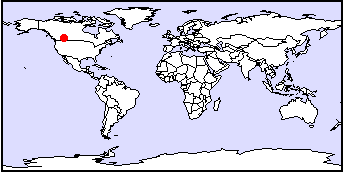Town/City:
|
Calgary
|
State/Province:
|
Alberta
|
Country:
|
Canada
|
Latitude/Longitude:
|
51N 114W
|
Information supplied by
Phil Esslinger
phil@rpcl.com
Groundwater Solutions Ltd., 230 319 2nd Ave, Calgary, Canada T2P
0C5
(403) 263-2493
Dated Fri Jan 9 11:18:24 1998
|
City Description:
According to the 1997 Civic Census the population of Calgary as of the April
1997 was 790,498 persons. Calgary's population is expected to reach the one
million mark by the year 2008. Population density is low as the city is the
second largest municipality in area in Canada covering 721 square kilometres.
Calgary is the business and financial capital of interior western Canada. Calgary
is a rapidly growing dynamic city with a well diversified economy and a primary
industrial base focused on the exploration for and exploitation of hydrocarbons
and coal. Other significant industries include manufacturing, high technology,
labour-intensive service industries, agriculture and agricultural products.
Tourism plays a large part in Calgary's economy as Calgary is the doorway to
Banff and the spectacular Canadian Rockies and hosts the yearly "Greatest Outdoor
Show On Earth - The Calgary Stampede". Source: www.gov.calgary.ab.ca
Back to Topics
Moderate climate that enjoys four distinct seasons, including warm summers
and mild Canadian winters. Precipitation averages 425 millimetres (16.7 inches),
of which 150 millimetres (5.9 inches) falls as snow. From May to September the
mean rainfall averages 300 millimetres (11.8 inches) and is sufficient to assure
a good crop. July is the month of maximum thunderstorm and hail activity. Individual
snowfalls rarely exceed 15 centimetres (6 inches) and a snow depth of 30 centimetres
(12 inches) occurs on the average of once in ten years. Experiences a unique
meteorological phenomenon, a "Chinook" that significantly moderates winter temperatures.
A Chinook is a warm dry wind that descends the eastern slopes of the Rocky Mountains
in the winter and can raise the temperature by more than 34 °C (55 °F)
in one day, on average Calgary experiences 25 days of Chinooks per winter. Source:
www.gov.calgary.ab.ca
Back to Topics
Basic Hydrogeology:
Calgary is located at the confluence of the Bow and Elbow rivers. Calgary is
located in the foreland deep of the Western Canadian Sedimentary Basin with
sediment thicknesses below the city in excess of three kilometres. Quaternary
aged surficial deposits are glacial tills, glaciolacustrine, glaciofluvial and
river gravel terraces. Paleocene aged clastic sediments of the Paskapoo formation
underlie the surficial deposits. The remaining sedimentary column is comprised
of; Cretaceous, Jurassic and Triassic clastics, and Mississippian and Late Devonian
carbonates.
Back to Topics
Water Use:
The Quaternary river gravel terraces and Paleocene Paskapoo formation are the
major near surface aquifers used for potable water supply in the surrounding
countryside by smaller communities, farms and acreages. Calgary's potable water
is supplied from two surface reservoirs within the city limits, the Bearpaw
reservoir (*1) and the Glenmore reservoir (*2). The city is located close to
the headwaters of both of these rivers with few population centres upstream.
*1 - Dam on the Bow river *2 - Dam on the Elbow river
Back to Topics
Groundwater Issues:
Because significant volumes of high quality potable surface waters are available
to the city, groundwater contamination is not considered a severe threat at
this time. Eutrophication of surface waters by sewage effluent from the population
centres of Calgary, Banff and Cochrane, as well as runoff from agricultural
operations and golf courses in the Bow and Elbow drainages are the most pressing
water issues, especially for downstream farms and communities which rely on
the Bow river for a potable water supply and for irrigation.
Back to Topics
Groundwater Problems:
Within the city limits, leaking underground storage tanks, spills and disposal
at light industrial areas and old petroleum refining installations are the major
sources of potential groundwater contamination. A downtown area contaminated
by creosote and an old petroleum refinery both located on the banks of the Bow
River potentially impact the quality of the surface waters, fortunately both
are downstream of the reservoirs.
Back to Topics
Solutions:
Decreasing the input of the components that lead to eutrophication, nitrogen
and phosphorous, would improve the quality of water quality. Calgary processes
sewage effluent in three major stages; the Primary stage involves solids removal
and oxygen consuming organic loading, the Secondary stage involves oxidation
of organics and further lowering the concentration of suspended solids, the
Tertiary stage is phosphorus removal. Calgary has recently added ammonia removal
and upgraded the sewage treatment to include disinfection by ultra-violet light.
(Source: www.mb.ec.gc.ca/ENGLISH/WATER/WQPRAIRIE/intro.html).
A major remediation effort was directed towards preventing creosote from entering
the Bow river and cleaning up the contaminated site.
Back to Topics
References and Other Author(s):
City Of Calgary Website
Environment Canada Green Lane,
Prairie and Northern Region Website
Jackson, L.E. and Wilson, M.C., 1987, Geology of the Calgary Area, Canadian Society of
Petroleum Geologists Special Publication.
Ozoray, G.F. and Barnes, R., 1978, Hydrogeology of the Calgey-Golden area, Alberta, Alberta
Research Council Report 77-2.
Back to Topics
Contacts:
Alberta Environmental Protection, Natural Resources Service, Water Administration,
200, 3115 12 Street N.E., Calgary, Alberta, T2E 7J2, tel 403-297-6582, fax
403-297-2749
Back to Topics
Urban Groundwater Database Home Page

